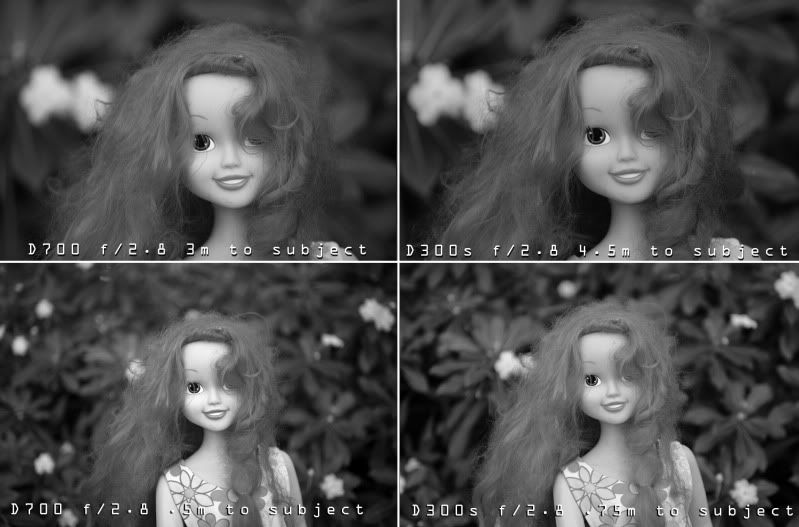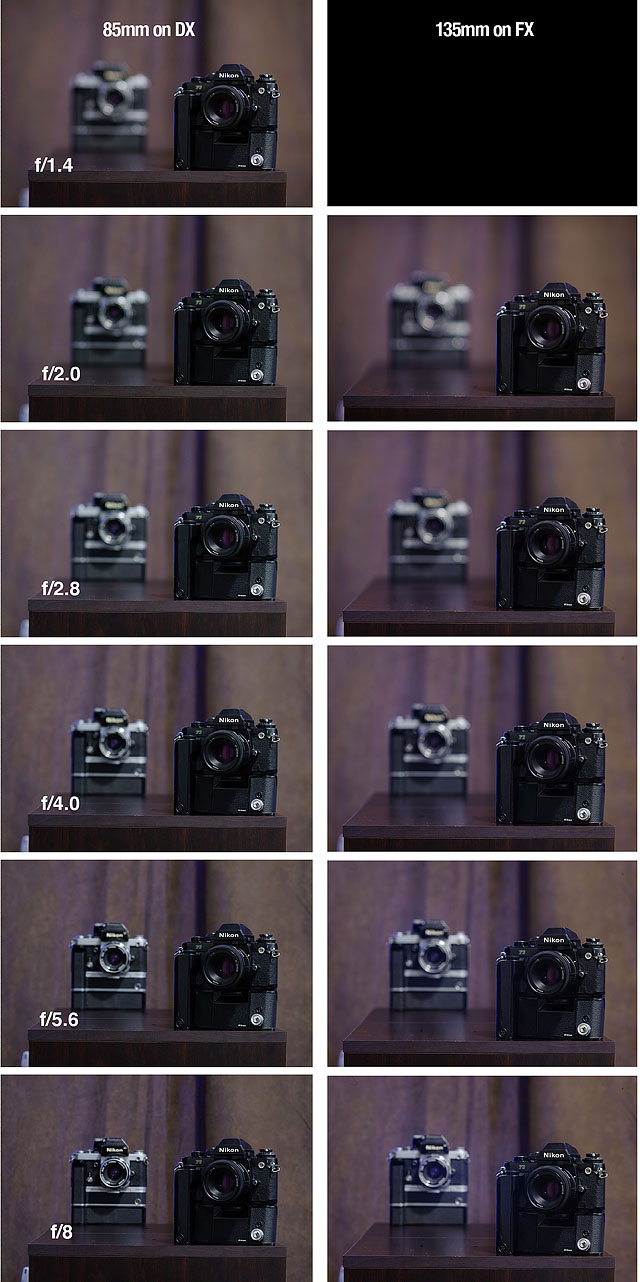It's all about optics, and there are plenty of great blogs that outline exactly how focal length and dof interact - just get out your Google and Bing fingers and start typing.
I
never said anything about equivalent focal length and DoF being the same. There is
no such thing as "focal length equivalent", only "framing equivalent". 35mm DX is not equivalent to 50mm FX, but they will give you a similarly framed photo. 85mm DX is not equivalent to 135mm FX, but they will give you a similarly framed photo. 35mm is 35mm is 35mm, regardless of format - the
only difference is the size of the sensor behind it and how much of the image produced by that lens gets captured.
One lens, one projection, two different size captures. You can never - NEVER - get the exact same photo from a DX and FX camera (without cropping the FX photo to DX size) because
every aspect of an image changes with focal length. Perspective changes in the field of view as it changes, which is why faces shot with a wide angle look warped compared to those taken with a portrait lens when you move to frame the same photo. The apparent distance front to back changes as focal length changes. This is a great photo illustrating that how focal length alone changes those things...
Seeing these two concepts it should be immediately obvious that there is no such thing as focal length equivalency, because the minute you change that
something is going to be altered that you cannot reproduce with any other focal length without moving the stuff in your viewfinder around.
So, to answer your specific question, "if we took sigmas 70mm for dx and the 105mm they have for the ff would the dof be the same?"
No!! At least not at the same aperture value. The 70mm at f2.8 on a DX camera would have
roughly the same dof as the 105mm at f4 on an FX camera, but other aspects of the photo
will be different.
DX and FX are different beasts capable of producing more than similar photos - but never the same photo. But comparing one to the other without fully understanding the basics behind each is like comparing apples to squash tournaments. OK, maybe not that bad, but people need to stop thinking about how you make one like the other and start thinking about what each one is on its own. It's
not that difficult a concept, and as I said there are plenty of detailed explanations out there - most of which I've linked here at one time or another. Learn about how focal length impacts Depth of Field, independent of format (FORGET FORMAT!!), and every other aspect of the image. It will help you decide which lens to use on that portrait so you don't step close to a model with a 28mm - she'll be pretty pissed when her thin face looks pudgy.




